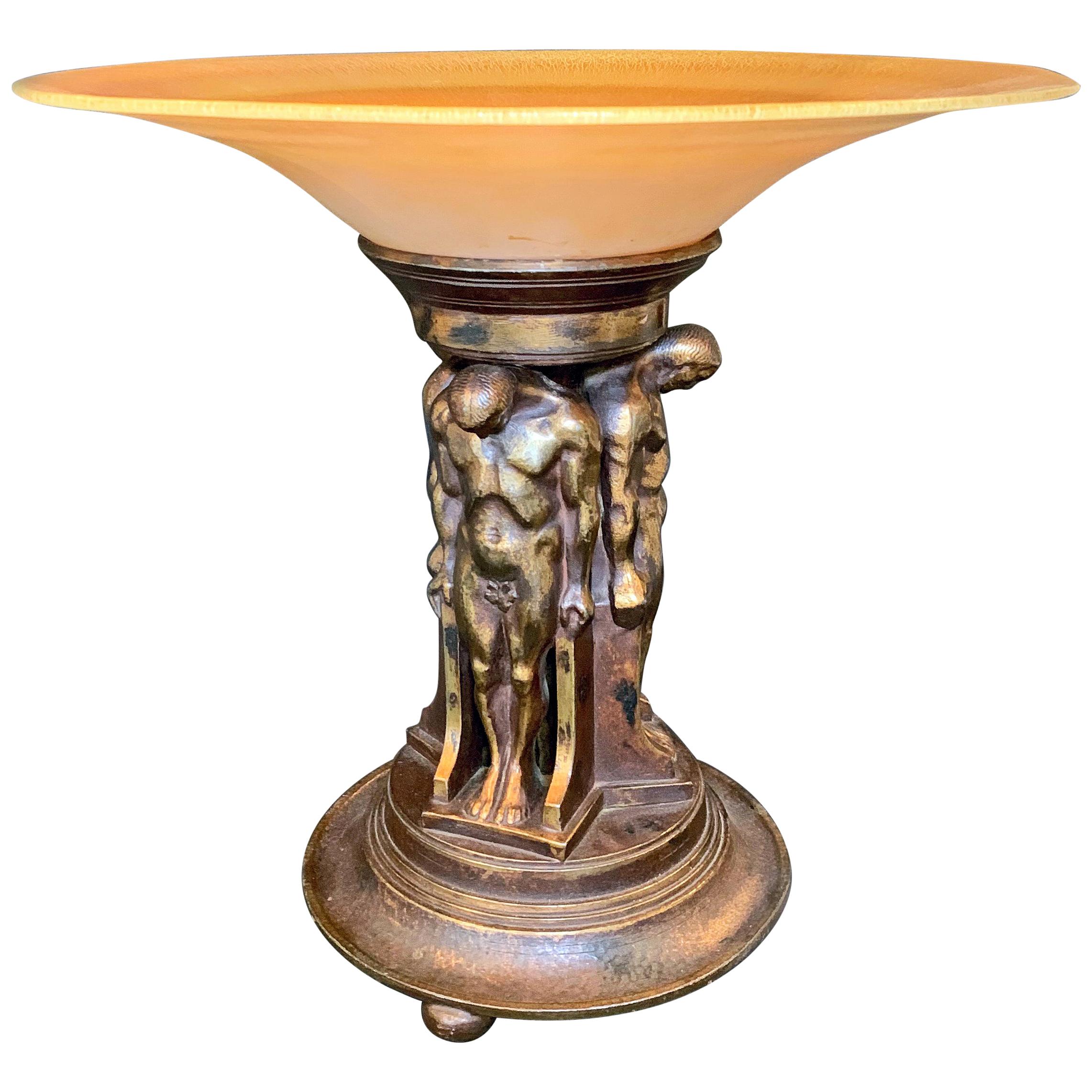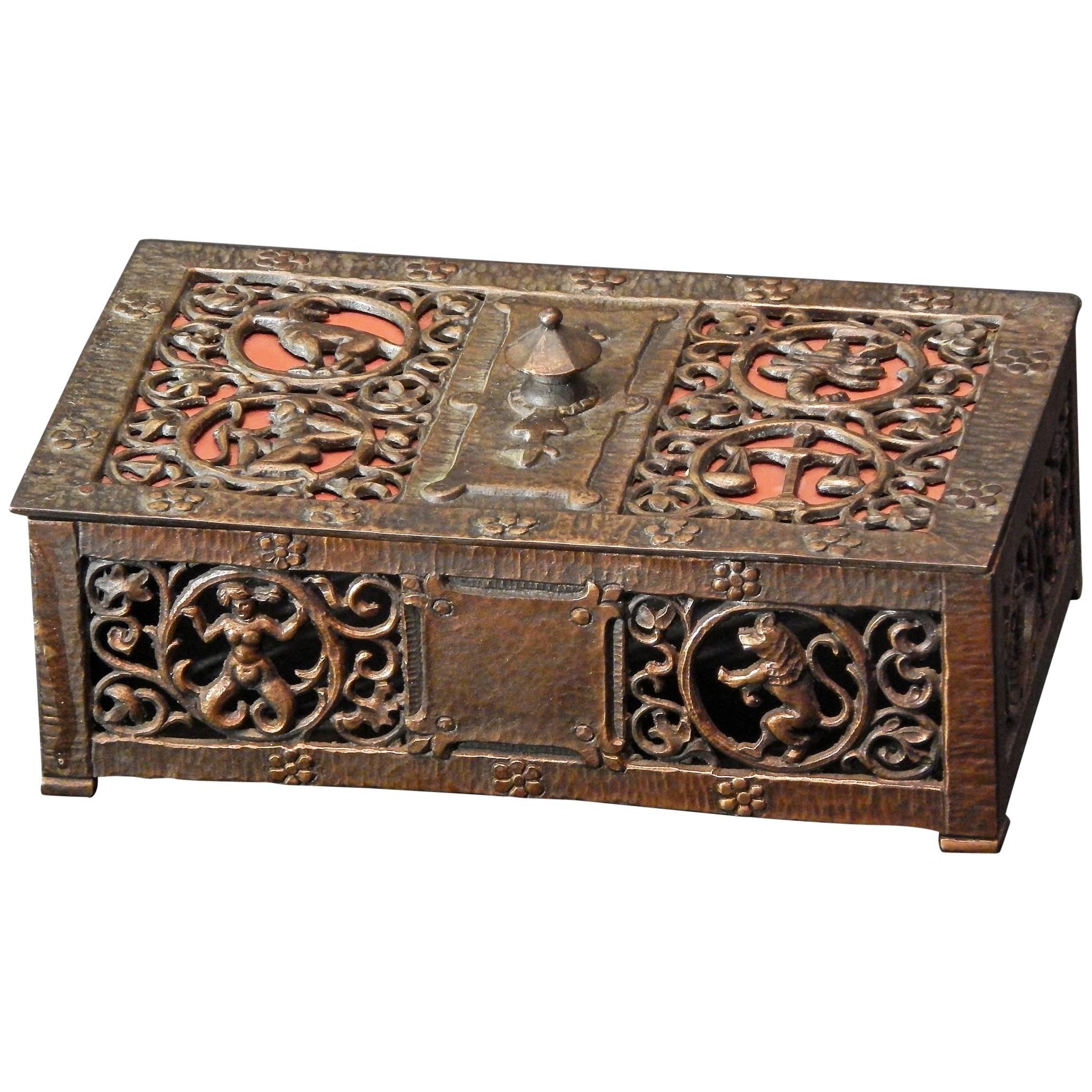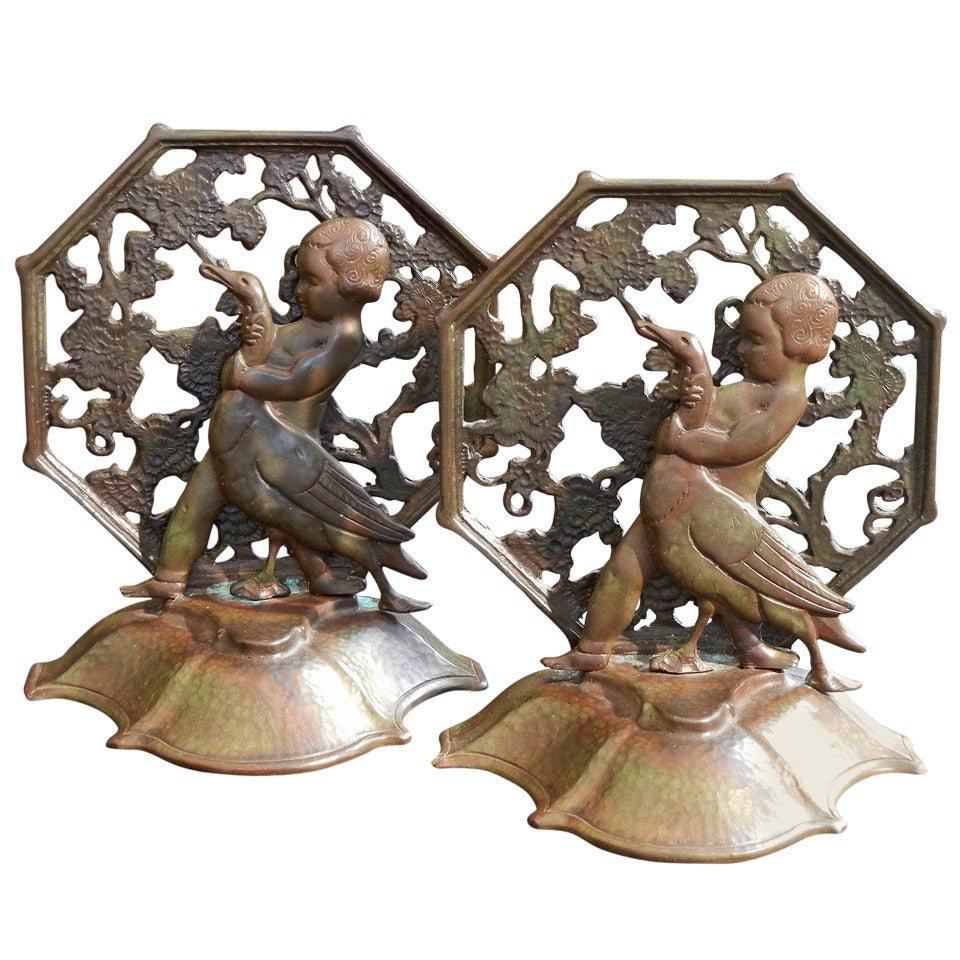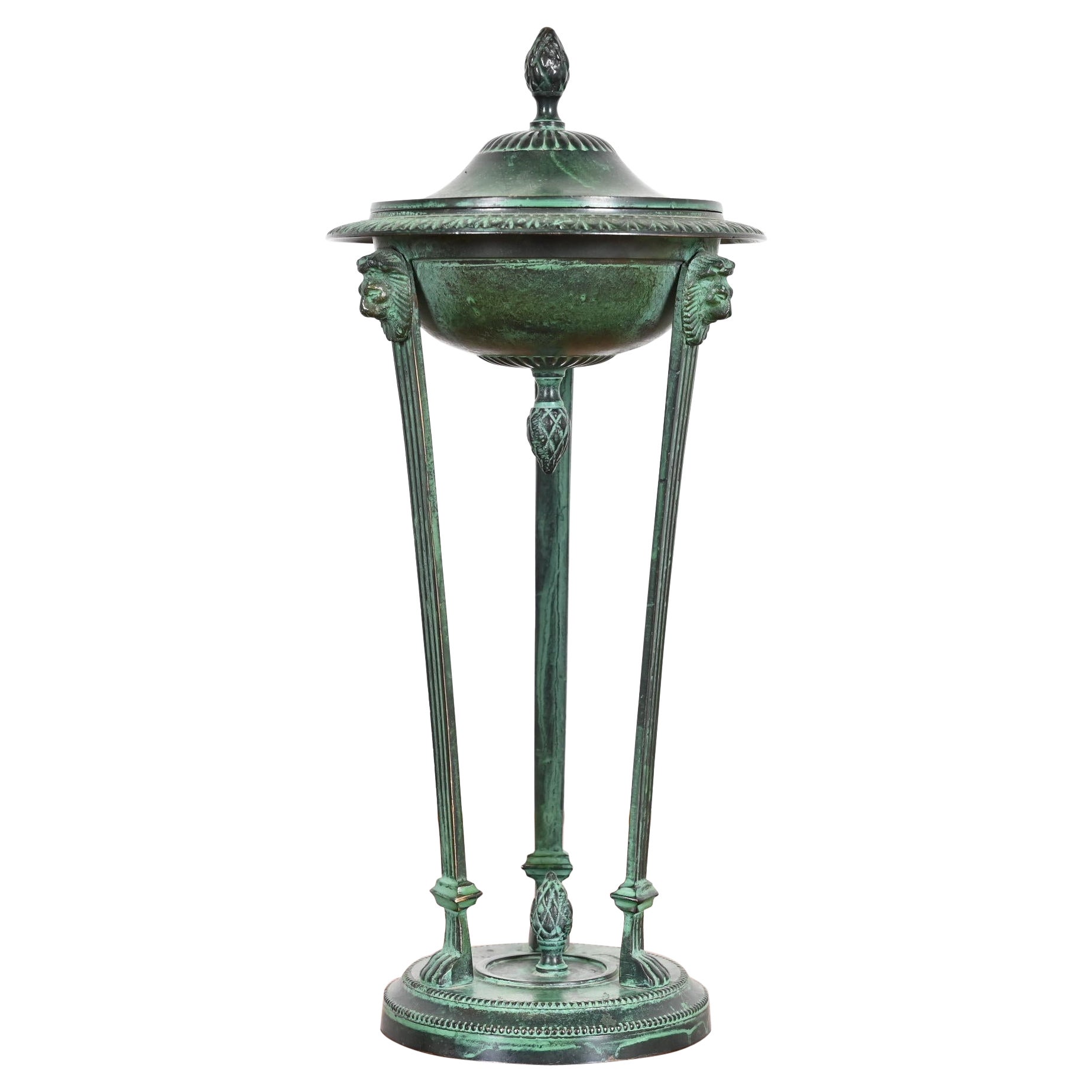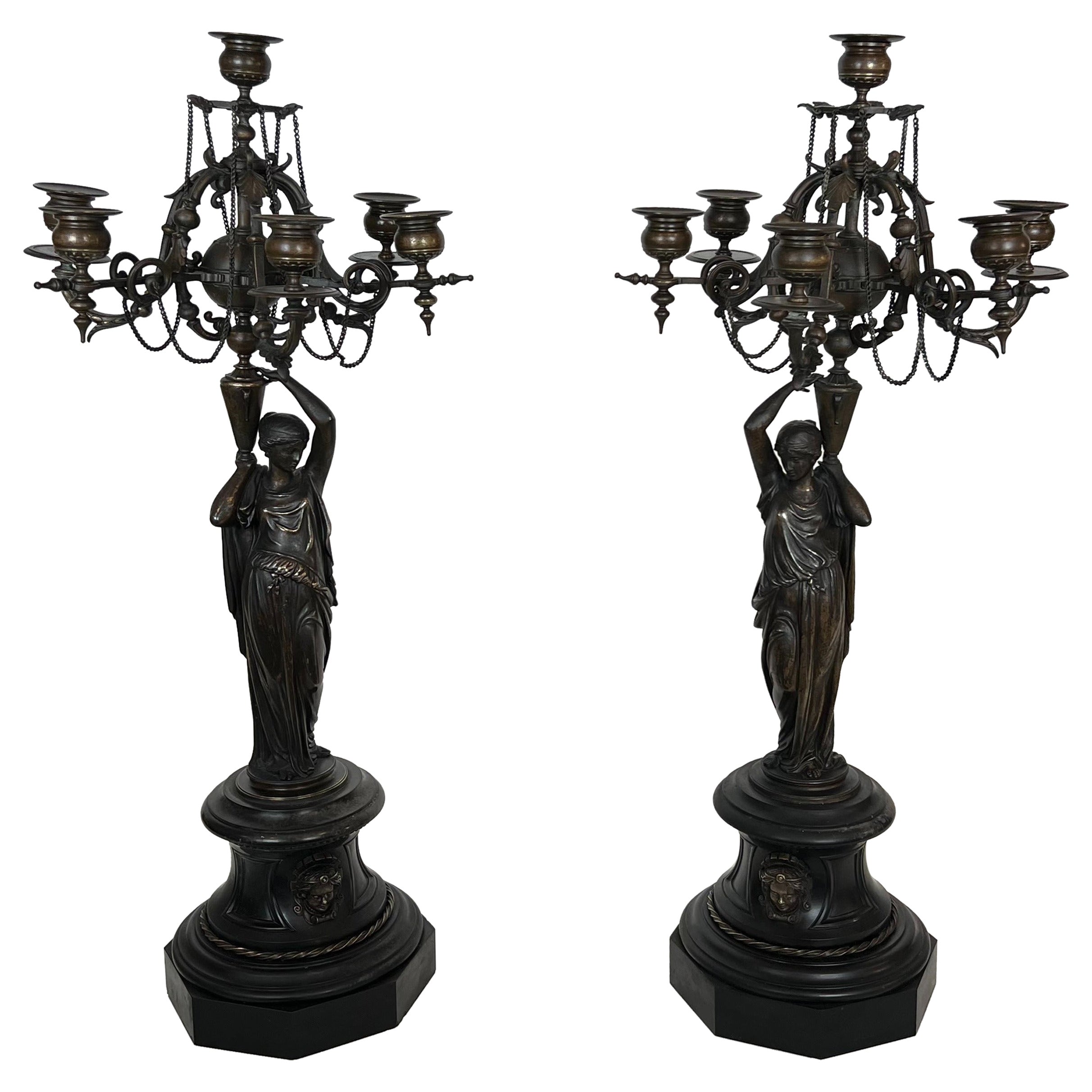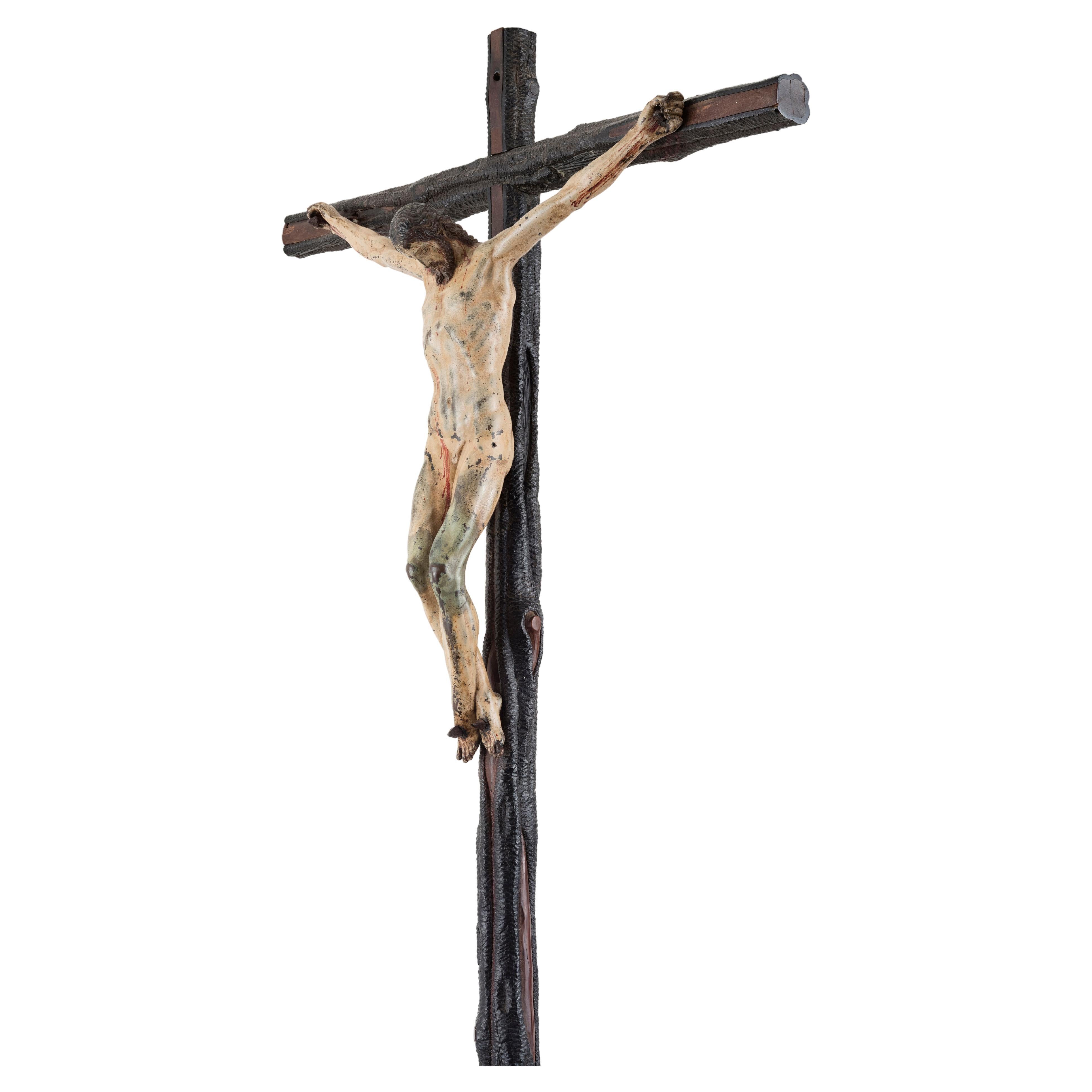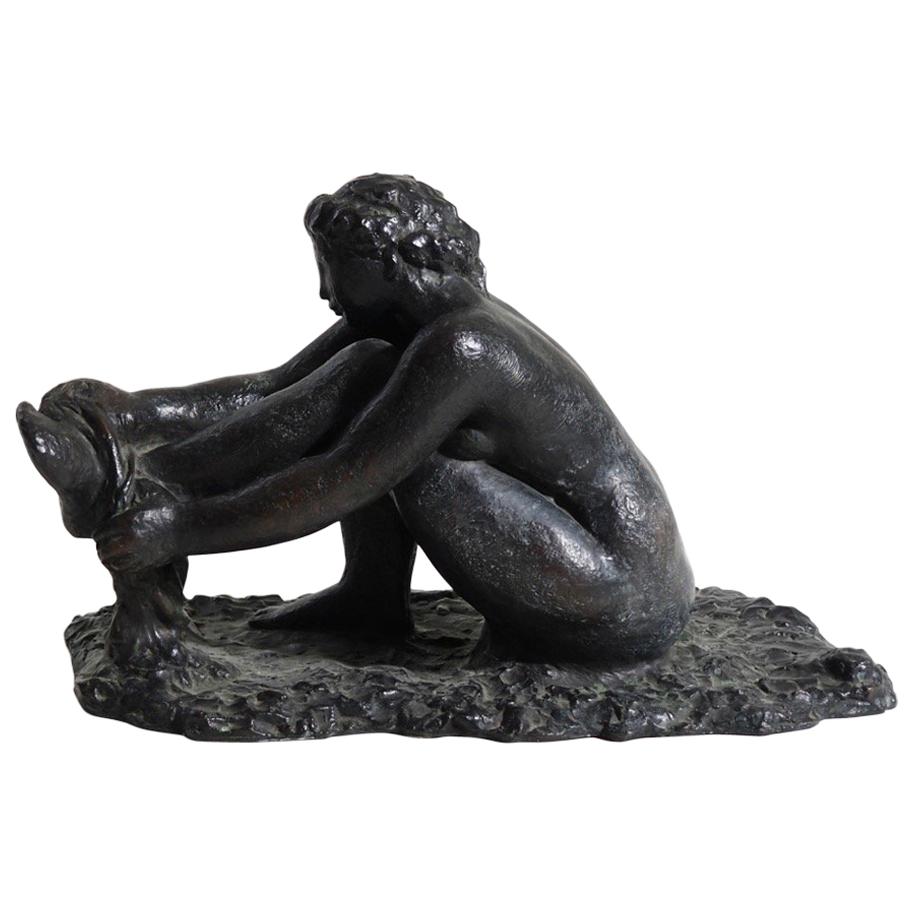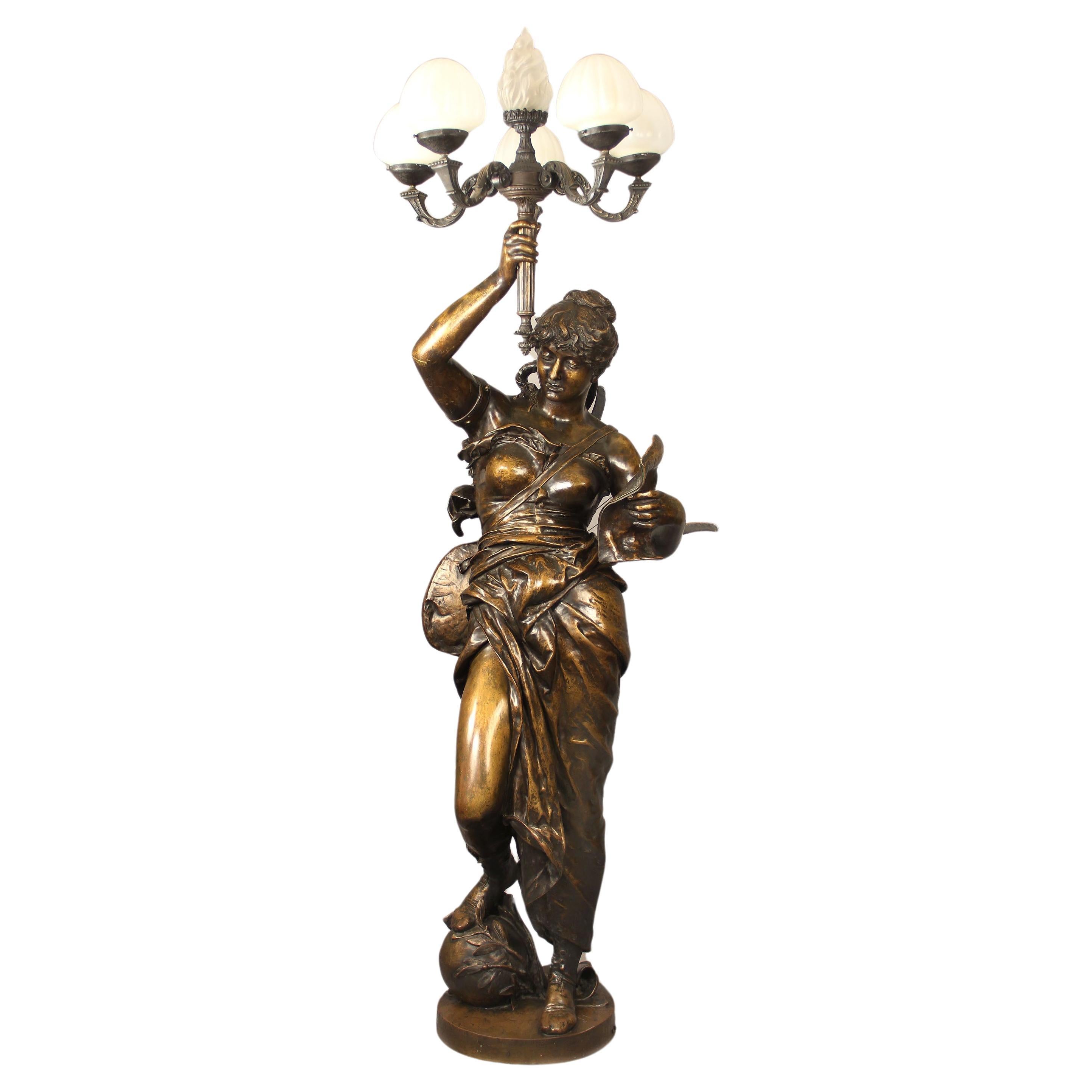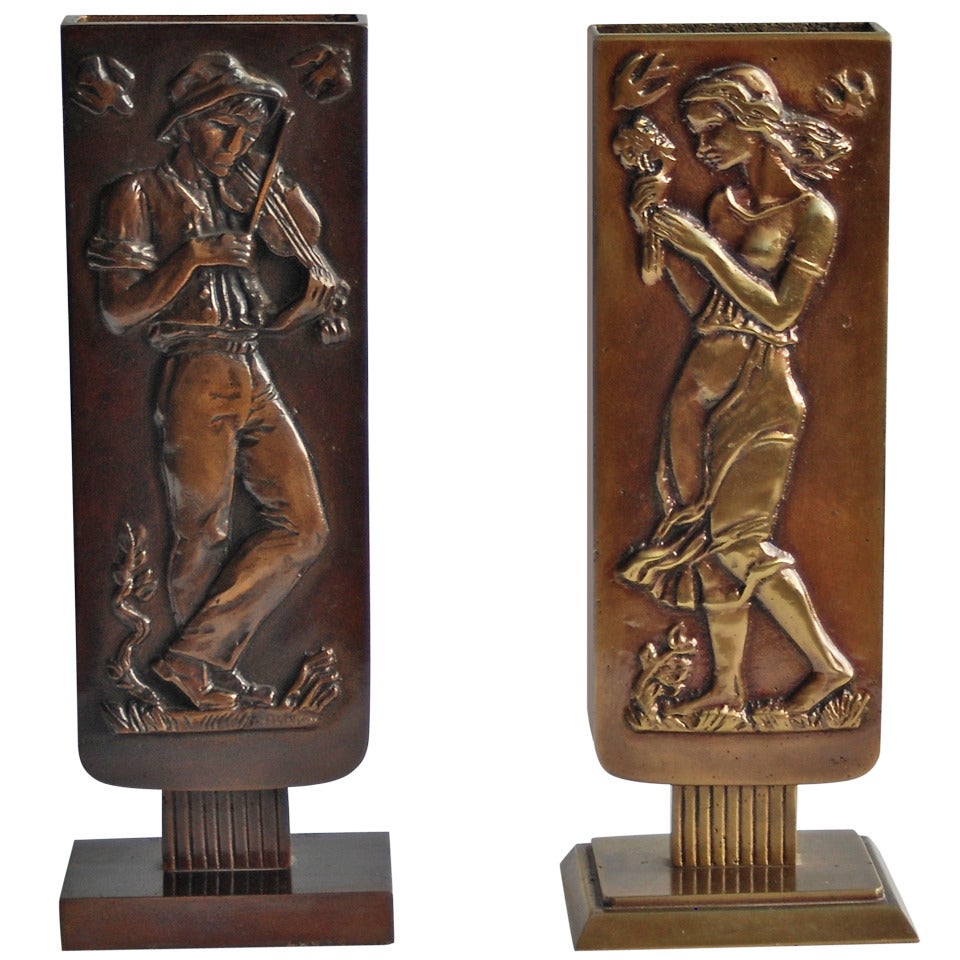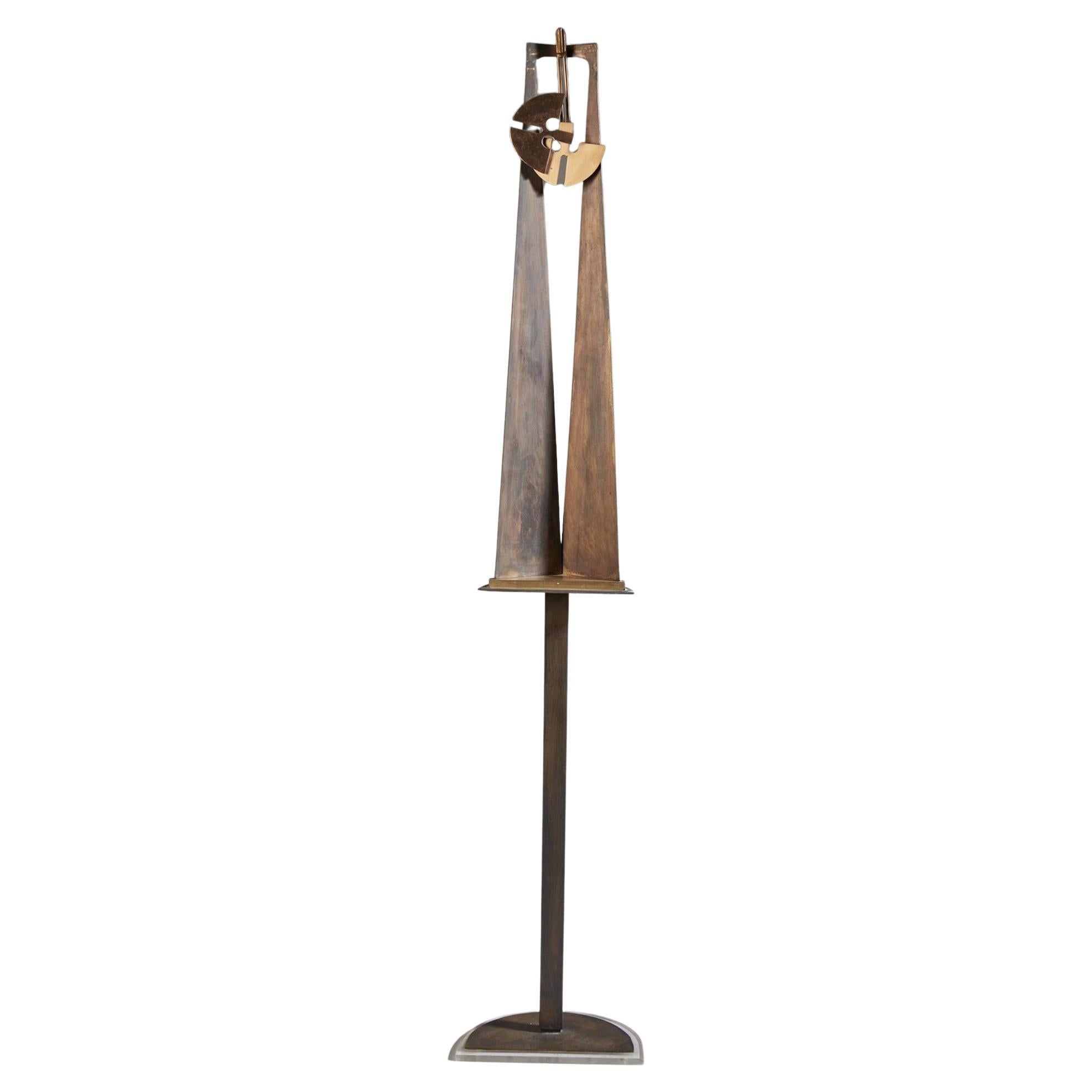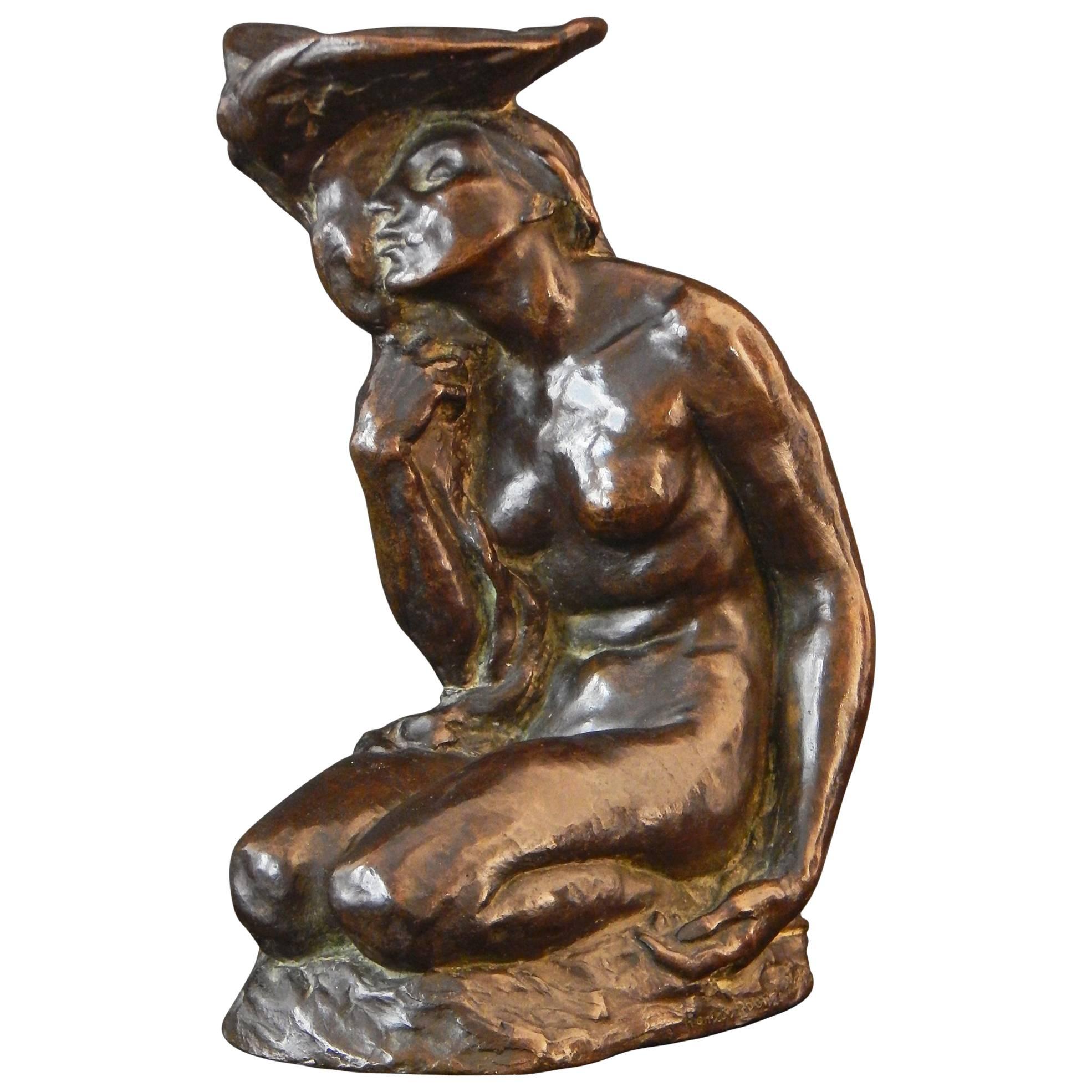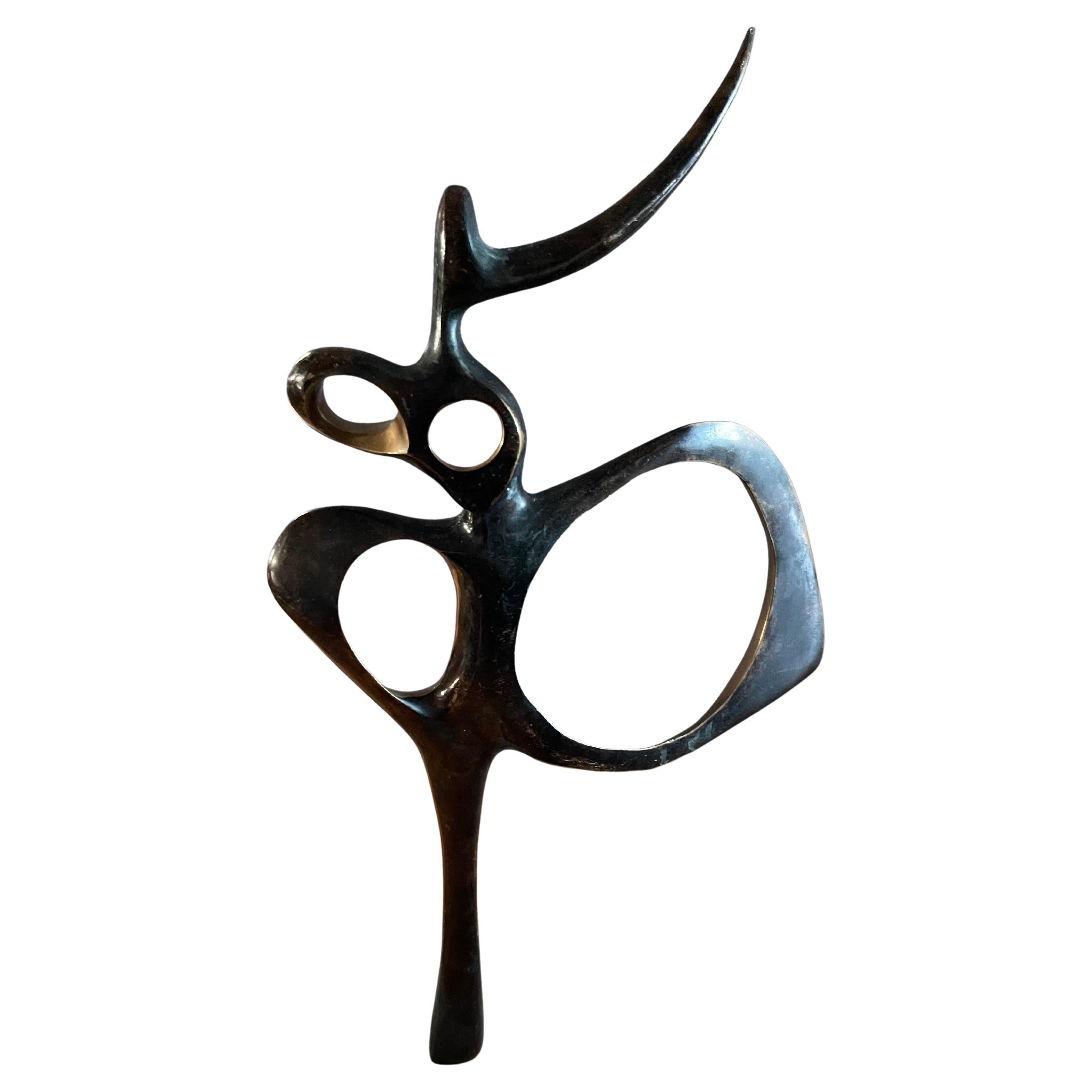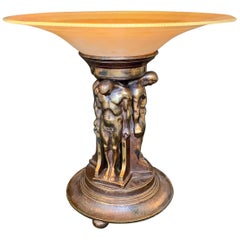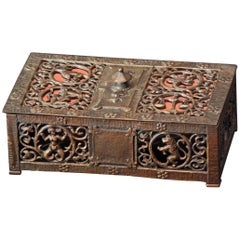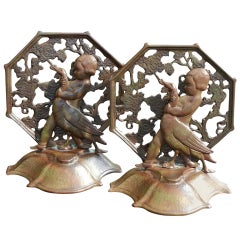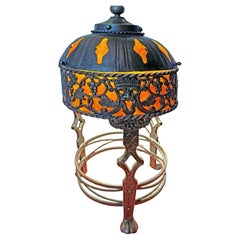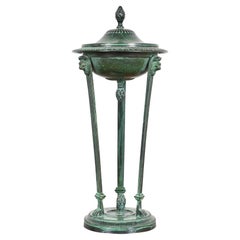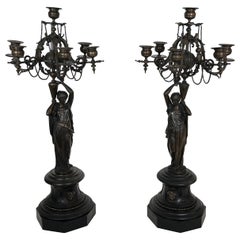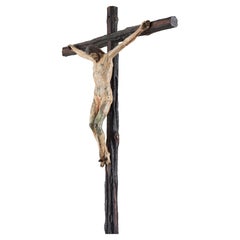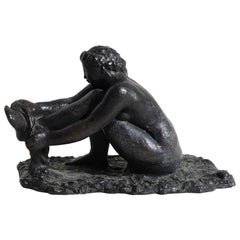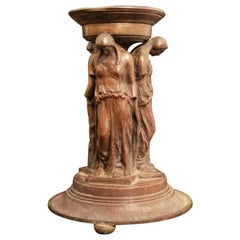
"Caryatids, " Important, Rare Bronze by Oscar Bach
View Similar Items
Want more images or videos?
Request additional images or videos from the seller
1 of 6
"Caryatids, " Important, Rare Bronze by Oscar Bach
Price:$1,050
$2,300List Price
About the Item
- Dimensions:Height: 10.5 in (26.67 cm)Diameter: 8 in (20.32 cm)
- Materials and Techniques:
- Place of Origin:
- Period:
- Date of Manufacture:circa 1920s
- Condition:Excellent; minor bending to upper edge.
- Seller Location:Philadelphia, PA
- Reference Number:1stDibs: U1201098651398
About the Seller
4.9
Vetted Professional Seller
Every seller passes strict standards for authenticity and reliability
Established in 2005
1stDibs seller since 2009
473 sales on 1stDibs
Typical response time: 1 hour
Authenticity Guarantee
In the unlikely event there’s an issue with an item’s authenticity, contact us within 1 year for a full refund. DetailsMoney-Back Guarantee
If your item is not as described, is damaged in transit, or does not arrive, contact us within 7 days for a full refund. Details24-Hour Cancellation
You have a 24-hour grace period in which to reconsider your purchase, with no questions asked.Vetted Professional Sellers
Our world-class sellers must adhere to strict standards for service and quality, maintaining the integrity of our listings.Price-Match Guarantee
If you find that a seller listed the same item for a lower price elsewhere, we’ll match it.Trusted Global Delivery
Our best-in-class carrier network provides specialized shipping options worldwide, including custom delivery.More From This Seller
View AllArt Deco Compote with Nude Male Caryatids, Oscar Bach Bronze with Lustre Glass
By Oscar Bruno Bach
Located in Philadelphia, PA
Stunning in design and execution, this large Art Deco compote is composed of a bronze base featuring a group of nude male caryatids supporting a gorge...
Category
Vintage 1920s American Art Deco Centerpieces
Materials
Bronze
"Zodiac Box, " Lidded Art Deco Bronze Casket with Zodiac Symbols by Oscar Bach
By Oscar Bruno Bach
Located in Philadelphia, PA
Beautifully cast and finished with a lovely, lustrous patina, this bronze lidded box depicts all 12 of the Zodiac symbols -- four on the lid and two ...
Category
Vintage 1920s American Art Deco Decorative Boxes
Materials
Bronze
$1,200 Sale Price
20% Off
"Girl and Goose, " Rare Pair of Art Deco Bronze Bookends by Bach
By Oscar Bruno Bach
Located in Philadelphia, PA
Beautifully detailed, with a gorgeous deep patina, this rare pair of bronze bookends by Oscar Bach depict girls holding geese by the neck, like something out of a charming nursery rh...
Category
Vintage 1930s American Art Deco Bookends
Materials
Bronze
$2,200 Sale Price / set
20% Off
Unique Bronze and Mica Lamp Inspired by Oscar Bach, Mask Motif
By Oscar Bruno Bach
Located in Philadelphia, PA
This domed bronze and mica lamp, a singular form, was crafted in the manner of Oscar Bach, America's foremost metal craftsman in the 1920s and 1930s. The frieze-like circular panel, ...
Category
Vintage 1930s American Art Deco Table Lamps
Materials
Bronze
"Bar Cabinet w/ Forest Motif", Art Deco Masterwork w/ Bronze Mounts, Oscar Bach
By Oscar Bruno Bach
Located in Philadelphia, PA
One of the greatest masterpieces ever created by Oscar Bach -- who made the enormous sculptural rondels on the facade of Radio City Music Hall designed by Hildreth Meière...
Category
Vintage 1930s American Art Deco Dry Bars
Materials
Bronze
"Epergne with Squirrel Motif, " Art Deco Sculptural Centerpiece by Oscar Bach
By Oscar Bruno Bach
Located in Philadelphia, PA
Both high style and highly rare, this centerpiece or epergne surmounted by a silvered bronze squirrel was created by the celebrated Oscar Bach studio in New York. Oscar Bach was, along with Samuel Yellin, one of America's premier metalworkers in the 1920s and 1930s. He crafted enormous metal sculptures designed by Hildreth Meière...
Category
Vintage 1930s American Art Deco Centerpieces
Materials
Metal
$1,000 Sale Price
20% Off
You May Also Like
Oscar Bach Style Neoclassical Footed Bronze Censer
By Oscar Bruno Bach
Located in South Bend, IN
A gorgeous Neoclassical style bronze censer featuring lion heads and paw feet
In the manner of Oscar Bach
USA, Mid-20th Century
Measures: 5.5"W x 5.5"D x 12.25"H.
Very go...
Category
Mid-20th Century American Neoclassical Urns
Materials
Bronze
Pair of Important Candelabra in Patinated Bronze Presenting Caryatids Carrying
By Louis Valentin Elias Robert
Located in Marcq-en-Barœul, Hauts-de-France
This pair of very nice and decorative tall candelabras are made of patinated bronze featuring caryatids holding 5 candlesticks on a black marble base decorated with bronze decoration...
Category
Antique Early 1900s French Figurative Sculptures
Materials
Marble, Bronze
Rare and important painted bronze Crucifix after a model by Michelangelo
By Michelangelo Buonarroti
Located in Leesburg, VA
A rare and very fine bronze corpus of Christ after a model by Michelangelo, cast ca. 1597-1600 by Juan Bautista Franconio and painted in 1600 by Francisco Pacheco in Seville, Spain.
The present corpus reproduces a model attributed to Michelangelo. The best known example, lesser in quality, is one on display at the Metropolitan Museum of Art (MET).
The association of this corpus with Michelangelo was first brought to light by Manuel Gomez-Moreno (1930-33) who studied the wider circulated casts identified throughout Spain. The attribution to Michelangelo was subsequently followed by John Goldsmith-Phillips (1937) of the MET and again by Michelangelo expert, Charles de Tolnay (1960).
While Michelangelo is best known for his monumental works, there are four documented crucifixes he made. The best known example is the large-scale wooden crucifix for the Church of Santa Maria del Santo Spirito in Florence, made in 1492 as a gift for the Prior, Giovanni di Lap Bicchiellini, for allowing him to study the anatomy of corpses at the hospital there. In 1562, Michelangelo wrote two letters to his nephew, Lionardo, indicating his intention to carve a wooden crucifix for him. In 1563 a letter between Lionardo and the Italian sculptor Tiberio Calcagni, mentions this same crucifix (a sketch of a corpus on the verso of a sheet depicting Michelangelo’s designs for St. Peter’s Basillica [Palais des Beaux-Arts in Lille] may reproduce this). That Michelangelo was working on small corpora in the last years of his life is further evidenced by the small (26.5 cm) unfinished wooden crucifix located at the Casa Buonarroti, considered his last known sculptural undertaking. Michelangelo’s contemporary biographer, Giorgio Vasari additionally cites that Michelangelo, in his later years, made a small crucifix for his friend, Menighella, as a gift.
Surviving sketches also indicate Michelangelo’s study of this subject throughout his career, most notably during the end of his life but also during the 1530s-40s as he deepened his spiritual roots. The occasional cameo of crucified Christ’s throughout his sketched oeuvre have made it challenging for scholars to link such sketches to any documented commissions of importance. All the while, in consideration that such objects were made as gifts, it is unlikely they should be linked with commissions.
Nonetheless, a number of theories concerning Michelangelo’s sketches of Christ crucified have been proposed and some may regard the origin of the present sculpture. It has been suggested that the corpus could have its impetus with Michelangelo’s work on the Medici Chapel, whose exclusive design was given to the master. It is sensible smaller details, like an altar cross, could have fallen under his responsibility (see for example British Museum, Inv. 1859,0625.552). Others have noted the possibility of an unrealized large marble Crucifixion group which never came to fruition but whose marble blocks had been measured according to a sheet at the Casa Buonarroti.
A unique suggestion is that Michelangelo could have made the crucifix for Vittoria Colonna, of whom he was exceedingly fond and with whom he exchanged gifts along with mutual spiritual proclivities. In particular, Vittoria had an interest in the life of St. Bridget, whose vision of Christ closely resembles our sculpture, most notably with Christ’s proper-left leg and foot crossed over his right, an iconography that is incredibly scarce for crucifixes. The suggestion could add sense to Benedetto Varchi’s comment that Michelangelo made a sculpted “nude Christ…he gave to the most divine Marchesa of Pescara (Vittoria Colonna).”
Of that same period, two sketches can be visually linked to our sculpture. Tolnay relates it to a sketch of a Crucified Christ at the Teylers Museum (Inv. A034) of which Paul Joannides comments on its quality as suggestive of preparations for a sculptural work. Joannides also calls attention to a related drawing attributed to Raffaello da Montelupo copying what is believed to be a lost sketch by Michelangelo. Its relationship with our sculpture is apparent. Montelupo, a pupil of Michelangelo’s, returned to Rome to serve him in 1541, assisting with the continued work on the tomb of Pope Julius II, suggesting again an origin for the corpus ca. 1540.
The earliest firm date that can be given to the present corpus is 1574 where it appears as a rather crudely conceived Crucifixion panel, flanked by two mourners in low-relief and integrally cast for use as the bronze tabernacle door to a ciborium now located at the Church of San Lorenzo in Padula. Etched in wax residue on the back of the door is the date, 27 January 1574, indicating the corpus would have at least been available as a model by late 1573.
The Padula tabernacle was completed by Michelangelo’s assistant, Jacopo del Duca and likely has its origins with Michelangelo’s uncompleted tabernacle for the Basilica of St. Mary of the Angels in Rome.
The impetus for the Padula tabernacle’s Crucifixion panel begins with a series of late Crucifixion sketches by Michelangelo, depicting a scene of Christ crucified and flanked by two mourners (see British Museum Inv. 1895.0915.510; Ashmolean Museum Inv. 1846.89, KP II 343 recto; Windsor Castle RCIN 912761 recto; and Louvre Inv. 700). A faintly traced block possibly intended for sculpting the sketch of the crucified Christ on its recto was discovered by Tolnay on a version of the composition at Windsor Castle. The Windsor sketch and those related to it appear to have served as preparatory designs for what was probably intended to become the Basilica of St. Mary’s tabernacle door. Vasari documents that the project was to be designed by Michelangelo and cast by his assistant, Jacopo del Duca. Michelangelo died before the commission was complete, though on 15 March 1565, Jacopo writes to Michelangelo’s nephew stating, “I have started making the bronze tabernacle, depending on the model of his that was in Rome, already almost half complete.” Various circumstances interrupted the completion of the tabernacle, though its concept is later revitalized by Jacopo during preparations to sell a tabernacle, after Michelangelo’s designs, to Spain for Madrid’s El Escorial almost a decade later. The El Escorial tabernacle likewise encountered problems and was aborted but Jacopo successfully sold it shortly thereafter to the Carthusians of Padula.
An etched date, 30 May 1572, along the base of the Padula tabernacle indicates its framework was already cast by then. A 1573 summary of the tabernacle also describes the original format for the door and relief panels, intended to be square in dimension. However, a last minute decision to heighten them was abruptly made during Jacopo’s negotiations to sell the tabernacle to King Phillip II of Spain. Shortly thereafter the commission was aborted. Philippe Malgouyres notes that the Padula tabernacle’s final state is a mixed product of the original design intended for Spain’s El Escorial, recycling various parts that had already been cast and adding new quickly finished elements for its sale to Padula, explaining its unusually discordant quality, particularly as concerns the crudeness of the door and relief panels which were clearly made later (by January 1574).
Apart from his own admission in letters to Spain, it is apparent, however, that Jacopo relied upon his deceased master’s designs while hastily realizing the Padula panels. If Michelangelo had already earlier conceived a crucifix model, and Jacopo had access to that model, its logical he could have hastily employed it for incorporation on the door panel to the tabernacle. It is worth noting some modifications he made to the model, extending Christ’s arms further up in order to fit them into the scale of the panel and further lowering his chin to his chest in order to instill physiognomic congruence. A crude panel of the Deposition also follows after Michelangelo’s late sketches and is likewise known by examples thought to be modifications by Jacopo based upon Michelangelo’s initial sculptural conception (see Malgouyres: La Deposition du Christ de Jacopo del Duca, chef-d’oeuvre posthume de Michel-Ange).
Jacopo’s appropriation of an original model by Michelangelo for more than one relief on the Padula tabernacle adds further indication that the crucifix was not an object unique to Jacopo’s hand, as few scholars have posited, but rather belongs to Michelangelo’s original...
Category
Antique 16th Century Renaissance Figurative Sculptures
Materials
Bronze
Very Important Bronze Statue by Gerhard Henning
By Gerhard Henning
Located in Aalsgaarde, DK
Very important bronze statue signed by Gerhard Henning. He is considered to be one of greatest Danish artists and is represented in many Danish museums, including "Ny Carlsberg Glyptotek" where he's bronze sculpture are exhibited together with degas sculptures...
Category
Early 20th Century Danish Figurative Sculptures
Materials
Bronze
Rare and Important Late 19th Century Over Life Size Bronze Torchere by J Coutan
By Thiebaut Freres
Located in Long Island City, NY
A Rare and Important Late 19th Century Over Life Size Bronze Torchere by J Coutan and Thiebaut Freres
Jules-Félix Coutan
Modeled as a classically clad female musician holding a “tu...
Category
Antique Late 19th Century French Belle Époque Figurative Sculptures
Materials
Bronze
Pair of Bronze Vases by Oscar Antonsson
Located in Long Island City, NY
A pair of patinated Bronze vases designed by Oscar Arvid Antonsson (1898-1960) for Athena Ystad. Sweden Circa 1940s.
The decor of the woman and the fiddl...
Category
Vintage 1940s Swedish Scandinavian Modern Vases
Materials
Bronze
$1,600 Sale Price / set
20% Off
Recently Viewed
View AllMore Ways To Browse
Caryatid Lamp
Large Marble Bust
1880s Bronze Sculptures
White Ceramic Hands Sculpture Italian
Antique Replicas
Bronze Baby
Bronze Diana
Mineral Cluster
Red Coral Decorative
Antique Busts London
Art Deco Plaster Sculpture
Carved Fertility
Goldscheider Art Deco
Israel Mid Century Modern Furniture
Putto Sculpture
Antique German Statue
Boy Sculpture Marble
Wooden Sculpture Art Deco
